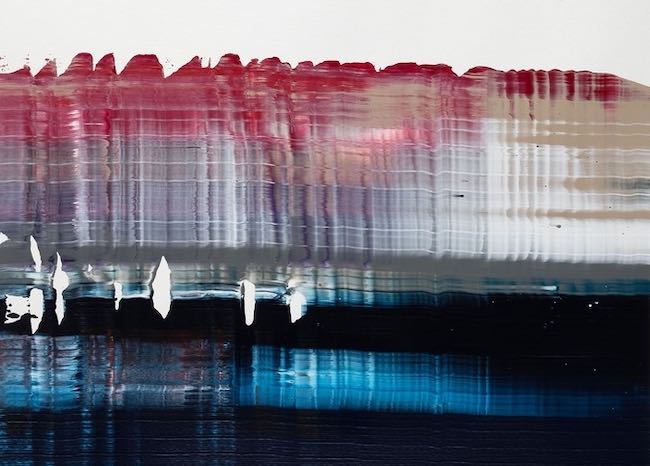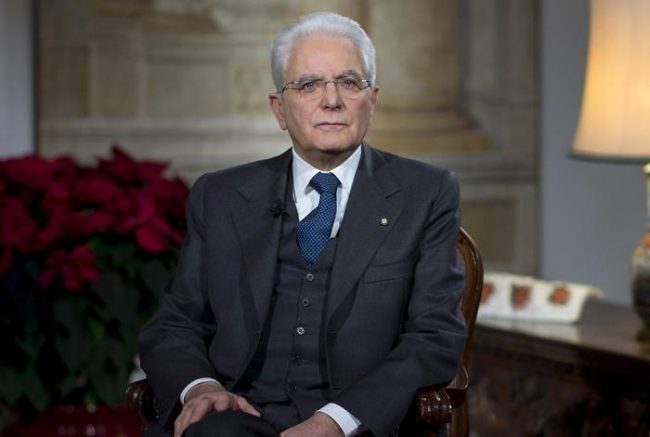Per alcuni artisti il gesto plastico, la spinta a lasciar fuoriuscire persino con irruenza le emozioni che percepiscono all’interno del sé, diviene esso stesso parte del medesimo percorso creativo che si concretizza e si manifesta poi sulla tela, su legno o sulla carta, in base al supporto prescelto dall’esecutore dell’opera. In particolar modo coloro i quali non hanno una particolare inclinazione nei confronti della pittura figurativa, percepiscono la libertà espressiva della forma astratta attraverso la quale sanno di non avere limiti o condizionamenti che costituirebbero una vera e propria gabbia alla loro ricca interiorità. L’artista di cui vi racconterò oggi è giunta alla sua cifra stilistica dopo una lunga fase di meditazione che l’ha condotta a maturare l’impulso creativo che solo in un secondo tempo ha assecondato dando vita a un linguaggio intenso in cui il gesto è parte imprescindibile della composizione finale.
Nella delicata fase di passaggio tra l’impostazione avanguardista dei movimenti dei primi decenni del Ventesimo secolo e l’inizio di una riflessione su cosa quelle correnti avevano lasciato in disparte o avevano escluso dalle linee guida che le avevano costituite, emerse un movimento destinato a segnare un’intera epoca e dopo il quale nulla fu come prima. L’Espressionismo Astratto, questo il nome di quel gruppo artistico, realizzò quanto i precedenti De Stijl, Astrattismo Geometrico, Informale Materico e Concettuale, avessero allontanato l’atto plastico, e di conseguenza il pubblico, da tutto ciò che in realtà costituiva l’essenza stessa dell’arte e cioè quel contatto con il mondo interiore e con la soggettività dell’esecutore dell’opera senza la quale tutto era affidato all’interpretazione della mente; i fondatori del movimento, tra cui Jackson Pollock, furono più orientati a seguire, implementare ed enfatizzare le linee guida tracciate da quello che è universalmente riconosciuto come il fondatore dell’Astrattismo, Vassily Kandinsky, e che aveva intuito l’importanza della connessione tra atto pittorico e anima che poteva essere coadiuvato dalla musica. Nell’Espressionismo Astratto i concetti iniziali di Kandinsky furono strettamente legati alla libertà formale che dunque lasciava agli artisti la facoltà di assecondare la propria naturale inclinazione senza imporre alcuna linea guida se non quella che ciascuna tela doveva essere manifestazione di un sentire interiore, fosse esso più meditato e rasserenante oppure più impulsivo e liberatorio. Tra gli artisti aderenti alla corrente ve ne furono alcuni che possono essere definiti precursori di particolari tecniche esecutive che poi nel corso degli anni seguenti sarebbero state riprese, ampliate e personalizzate da molti altri; Mark Rothko ideò il Color Field, poi sviluppato da Helen Frankenthaler, Hans Hoffman rese celebre la tecnica del Tachisme, Franz Kline fu il padre della pittura segnica e poi Jackson Pollock inventò il Dripping che indusse l’atto esecutivo a divenire parte integrante del dipinto fortemente legato all’impulso emotivo che poteva fuoriuscire con tutta la sua irruenza, senza dimenticare il Grattage che contraddistingue tutt’oggi la produzione artistica del maestro tedesco Gerard Richter. L’Action Paintig dunque, proprio in virtù delle innovazioni degli artisti appartenenti all’Espressionismo Astratto divenne un nuovo modo di affrontare il rapporto tra esecutore e opera d’arte, lo stesso che contraddistingue la viennese Ulla Hasen, nipote di un nonno artigiano e pittore con cui è cresciuta pur essendo convinta che l’arte non avrebbe mai potuto costituire la sua strada perché consapevole di non aver bisogno di raffigurare nulla.
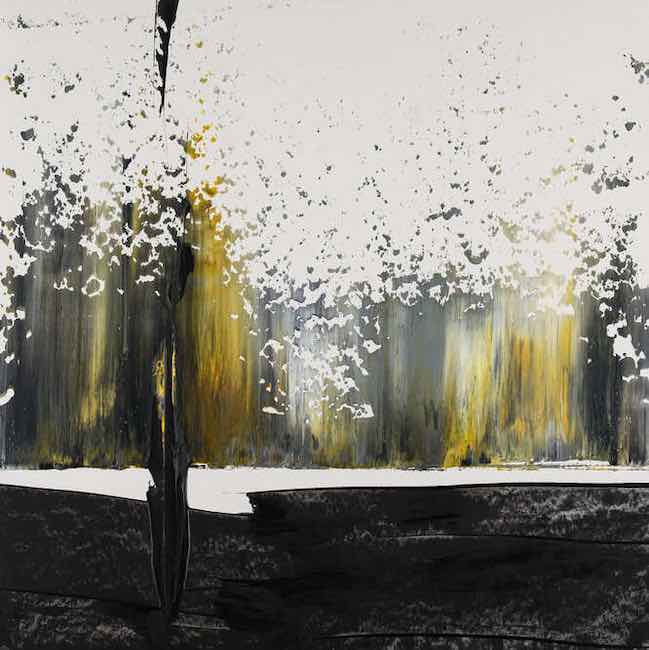
Tuttavia nel corso degli anni e con l’apertura a diverse forme d’arte non figurative, ha cominciato a sentir emergere un istinto naturale sempre più irrefrenabile che dall’eredità familiare la conduceva verso una forma espressiva informale, senza alcun confine determinato dal disegno e dall’attinenza alla realtà; è stato quello il momento in cui ha compreso che sarebbe stato possibile conciliare la sua naturale inclinazione verso la libertà e la possibilità di misurarsi con i colori, un mondo di fatto liberatorio proprio perché in grado di dare voce a un sé irrazionale che altrimenti sarebbe rimasto in silenzio.
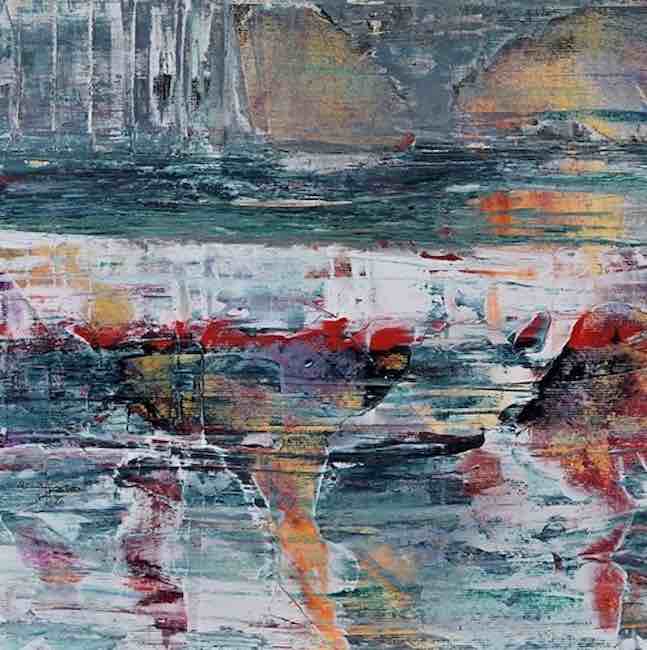
Il suo processo artistico parte dal concetto di abbandonare completamente ogni controllo della mente che costituisce per la maggior parte dell’esistenza una gabbia da cui spesso risulta difficile uscire, e abbandonarsi, rinunciare alla necessità di controllo per entrare in una dimensione differente dove l’impulso prende il sopravvento a comincia a comunicare, a lasciar fluire tutte le sensazioni irrazionali che diventano una vera e propria salvezza per l’anima, come se nel gesto creativo tutte le profondità emergessero alla superficie e liberassero l’essenza dal peso del doversi nascondere.
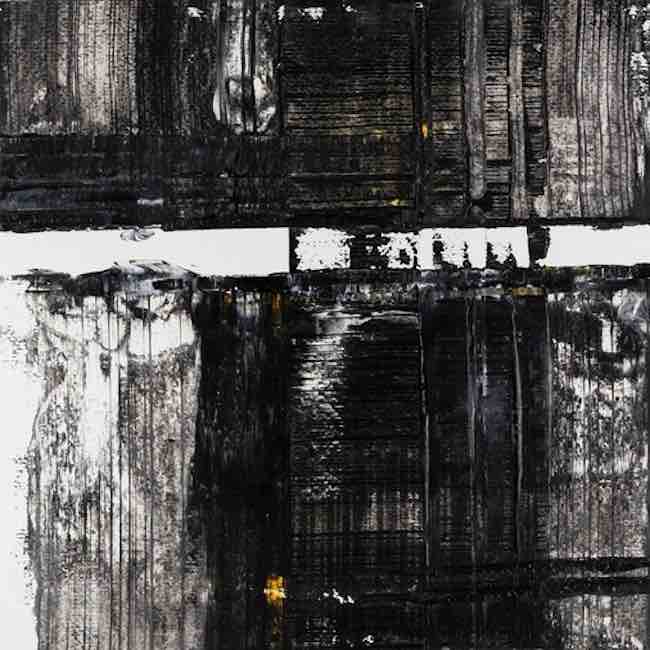
Con uno stile in cui mescola l’Action Painting più istintiva come da linee guida di Jackson Pollock all’intervento con spatole per mettere in evidenza alcune parti del dipinto, ispirandosi a Gerard Richter, Ulla Hasen rende l’esecuzione parte stessa dell’opera, come se la performance fosse direttamente collegata all’istante liberatorio che non deve rimanere atto intimo e privato bensì divenire invito ed esortazione all’osservatore a perseguire il medesimo fine. Ecco il motivo per cui i suoi lavori, rigorosamente su carta come se quest’ultima costituisse la superficie ideale per la sua caratteristica di non trattenere il colore con alcun tipo di trama o di viscosità, tipici invece della tela e del legno, riescono a far vibrare le corde interiori di chi osserva il risultato finale, anche laddove non abbia assistito al processo liberatorio della creazione; le tonalità scelte dalla Hasen si armonizzano con l’emozione che ha bisogno di comunicare e a cui decide di soventemente di non dare un titolo per non condizionare il fruitore, permettendogli così di interpretare l’osservato sulla base della propria sensibilità, della propria esperienza e del percorso evolutivo che sta affrontando nel momento in cui entra in contatto con il lavoro artistico.
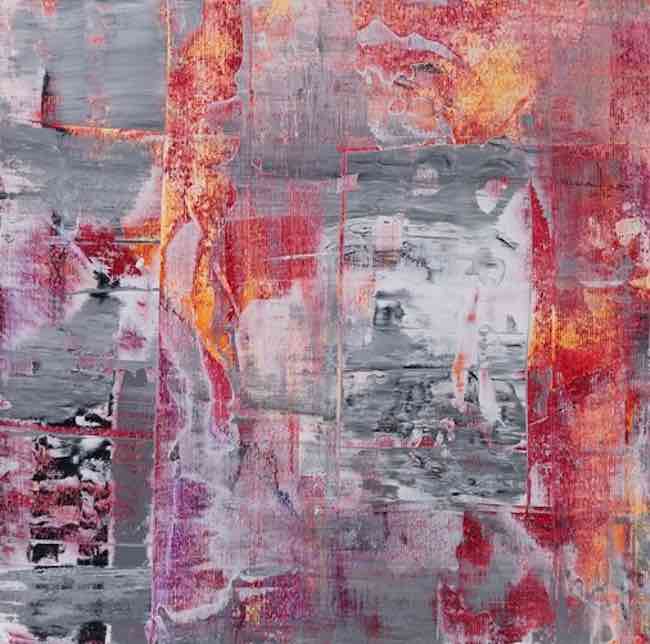
Nell’opera Ein Tribute an Lyotards Engel (Tributo all’Angelo di Lyotard), filosofo francese considerato il teorico della superiorità dell’arte astratta come forma sublime di espressione dell’inconscio, Ulla Hasen utilizza tonalità affini alla delicatezza, alla poesia che innalza la pittura a simbolo di riconciliazione con l’anima, distante dalla corsa all’estetica, alla perfezione formale e all’orientamento consumistico della società moderna, e attraverso questa gamma cromatica tenue guida verso le possibilità che l’interiorità riesce a scoprire, a intravedere in virtù della capacità di elevarsi ponendosi in posizione di maggiore ascolto di sé, senza pudori e senza timore di esprimersi.
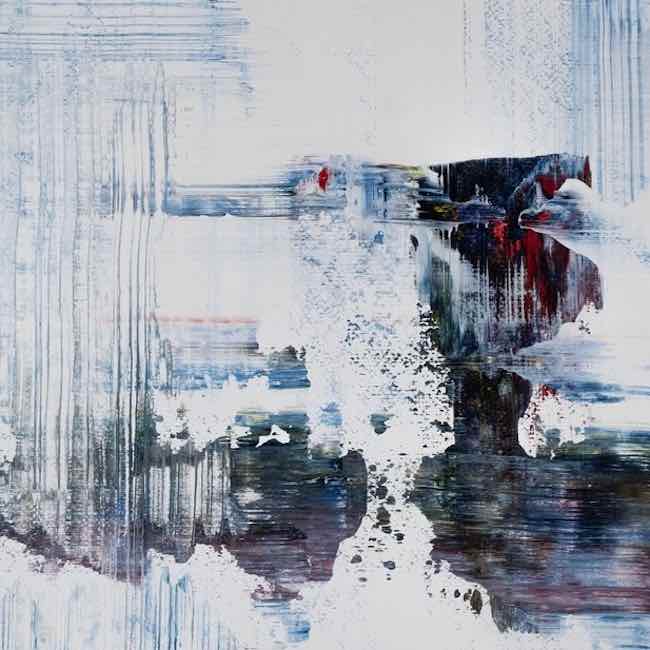
Nell’opera Ohne Titeln 1224 (Senza Titolo 1224) la realtà appare ancor più grattata, quasi non intuibile, come se la sensazione del momento in cui l’artista sente l’irresistibile impulso di cominciare a creare volesse cancellare tutte le false credenze, i luoghi comuni e gli ostacoli costituiti dalla società; il suggerimento in questo lavoro è quello di elevare la coscienza verso una dimensione in cui sentirsi libera, in cui possa allontanare da sé ogni costrizione al pensiero, al sentire e all’evolversi attraverso un’intima esperienza soggettiva, e non attraverso le costruzioni delle false o effimere verità del luogo comune.
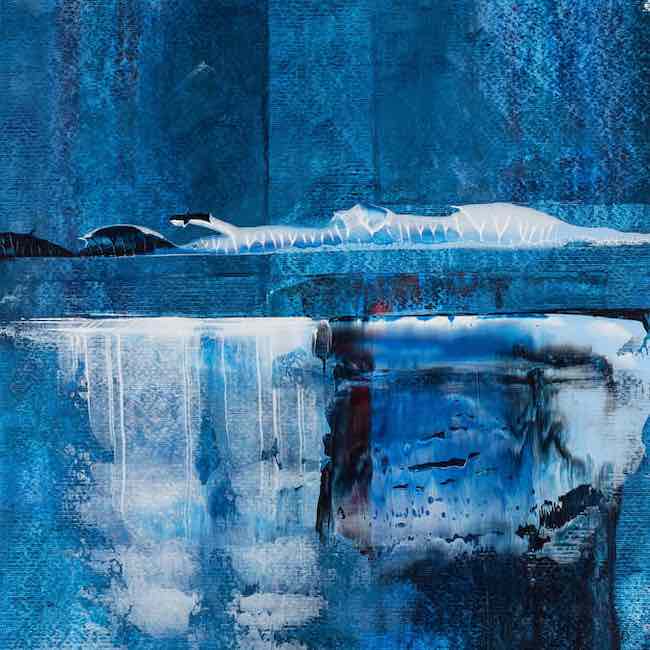
E ancora in Die gekreuzigte Natur (La natura incrociata) Ulla Hasen sembra descrivere due mondi differenti e paralleli, come fossero divisi da una riga immaginaria, che da un lato mettono in evidenza due distinte opzioni che la natura offre, e che l’uomo si trova davanti, dall’altro sottolineano quanto ogni scelta, ogni decisione presa possa avere ripercussioni su un futuro che si crede molto lontano pur invece essendo molto più prossimo del previsto; l’insieme sembra congelato come in un fotogramma di un sogno che può trasformarsi nella più ideale delle realtà oppure nel peggior scenario possibile. In questo lavoro si percepisce il desiderio dell’artista di riflettere su quanto tutto ciò che viene dato per scontato necessiti invece di essere preso in considerazione, soppesato, perché è dalle azioni di oggi che dipende il futuro che costruiamo. Dunque l’incrocio di cui parla il titolo potrebbe essere quello del bivio in cui si trova l’umanità, troppo distratta e presa da se stessa per ascoltare il grido di quel mondo naturale in cui, di fatto, l’essere umano è solo un ospite.
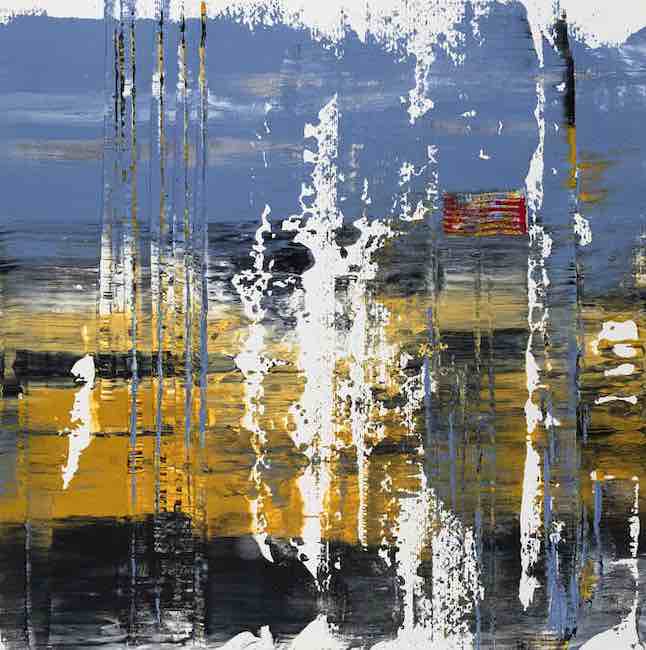
Il gesto pittorico di Ulla Hasen è inconsapevole fino al momento in cui incontra il colore, gesto accompagnato dalla musica dove trova la sua dimensione migliore, solo dopo lei stessa scopre quale messaggio le ha suggerito il suo inconscio. Ulla Hasen ha al suo attivo molte mostre collettive in Austria e all’estero, Italia, Usa, Svizzera, Spagna, Germania, Marocco, Turchia, Slovacchia, Olanda, e ha partecipato a diversi concorsi di pittura ricevendo consensi e riconoscimenti.
ULLA HASEN-CONTATTI
Email: uh66@gmx.at
Facebook: https://www.facebook.com/ulla.hasen
Instagram: https://www.instagram.com/ulla_hasen_wien/
The pictorial act of Ulla Hasen, when the gesture accompanied by the magic of music becomes part of th‘e painting
For some artists, the plastic gesture, the urge to even impetuously let out the emotions they perceive within themselves becomes part of the same creative process that materialises and then manifests on canvas, wood or paper, depending on the medium chosen by the executor of the artwork. Especially those who do not have a particular inclination towards figurative painting perceive the expressive freedom of the abstract form through which they know they have no limits or conditioning that would constitute a real cage to their rich interiority. The artist I am going to tell you about today arrived at her stylistic figure after a long phase of meditation that led her to mature the creative impulse that she only later indulged in, giving life to an intense language in which the gesture is an indispensable part of the final composition.
In the delicate phase of transition between the avant-garde approach of the movements of the first decades of the 20th century and the beginning of a reflection on what those currents had left behind or had excluded from the guidelines that had constituted them, emerged a movement that was destined to mark an entire epoch and after which nothing was like before. Abstract Expressionism, this is the name of that artistic group, realised how much the previous De Stijl, Geometric Abstractionism, Material Informalism and Conceptualism had distanced the plastic act, and consequently the public, from everything that actually constituted the very essence of art, namely that contact with the inner world and with the subjectivity of the artwork’s author without which everything was entrusted to the interpretation of the mind; the founders of the movement, including Jackson Pollock, were more inclined to follow, implement and emphasise the guidelines drawn by what is universally acknowledged as the founder of Abstractionism, Vassily Kandinsky, and who had perceived the importance of the connection between the pictorial act and the soul that could be assisted by music. In Abstract Expressionism, Kandinsky’s initial concepts were closely linked to formal freedom, which therefore left the artists free to indulge their natural inclinations without imposing any guidelines other than that each canvas had to be a manifestation of an inner feeling, whether it was more meditated and soothing or more impulsive and liberating.
Among the artists adhering to the current there were some who can be defined as forerunners of particular execution techniques that would be taken up, expanded and personalised by many others in the following years; Mark Rothko invented Colour Field, which was later developed by Helen Frankenthaler, Hans Hoffman made the Tachisme technique famous, Franz Kline was the father of sign painting and then Jackson Pollock invented Dripping, which induced the act of execution to become an integral part of the painting, strongly linked to the emotional impulse that could escape with all its impetuosity, without forgetting the Grattage that still distinguishes the artistic production of the German master Gerard Richter. Action Paintig therefore, by virtue of the innovations of the artists belonging to Abstract Expressionism, became a new way of approaching the relationship between performer and painting, the same that distinguishes the Viennese Ulla Hasen, niece of a grandfather who was a craftsman and painter with whom she grew up despite being convinced that art could never have been her path because she was aware that she did not need to depict anything. However, over the years and with her openness to various non-figurative art forms, she began to feel the emergence of an increasingly unstoppable natural instinct that led her from her family heritage towards an informal form of expression, without any boundaries determined by drawing and its relevance to reality; that was the moment when she realised that it would be possible to reconcile her natural inclination towards freedom and the possibility of measuring herself with colours, a world that is in fact liberating precisely because it is able to give voice to an irrational self that would otherwise have remained silent.
Her artistic process starts from the concept of completely abandoning all control of the mind, which for most of existence constitutes a cage from which it is often difficult to escape, and surrendering oneself, renouncing the need for control in order to enter a different dimension where the impulse takes over and begins to communicate, to let flow all irrational sensations which become a true salvation for the soul, as if in the creative gesture all the depths emerged to the surface and freed the essence from the burden of having to hide. With a style in which she mixes the most instinctive Action Painting as per Jackson Pollock’s guidelines with the intervention with spatulas to highlight certain parts of the painting, drawing inspiration from Gerard Richter, Ulla Hasen makes the execution part of the artwork itself, as if the performance were directly linked to the liberating instant that must not remain an intimate and private act but become an invitation and exhortation to the observer to pursue the same end. This is why her paintings, rigorously on paper as if the latter constituted the ideal surface due to its characteristic of not retaining the colour with any kind of texture or viscosity, typical instead of canvas and wood, succeed in vibrating the inner chords of those who observe the final result, even when they have not witnessed the liberating process of creation; the tones chosen by Hasen harmonise with the emotion she needs to communicate and to which she often decides not to give a title so as not to condition the viewer, thus allowing him to interpret the observed work on the basis of his own sensitivity, experience and the evolutionary path he is undergoing at the moment he comes into contact with the artistic work. In the painting Tribute to Lyotard’s Angel, a French philosopher considered to be the theorist of the superiority of abstract art as a sublime form of expression of the unconscious, Ulla Hasen uses tones akin to delicacy, to the poetry that raises painting to the status of a symbol of reconciliation with the soul, far removed from the race for aesthetics, formal perfection and the consumerist orientation of modern society, and through this soft colour range she guides towards the possibilities that the inner self is able to discover, to glimpse by virtue of the ability to elevate itself by placing in a position of greater self-hearing, without modesty and without fear of self-expression.
In the artwork Untitled 1224, reality appears even more scratchy, almost unintelligible, as if the sensation of the moment in which the artist feels the irresistible impulse to begin creating wanted to erase all false beliefs, clichés and obstacles constituted by society; the suggestion in this work is to elevate consciousness towards a dimension in which it can feel free, in which it can remove all constraints on thinking, feeling and evolving through an intimate subjective experience, and not through the constructions of the false or ephemeral truths of the commonplace. And again in The Crossed Nature Ulla Hasen seems to describe two different, parallel worlds, as if divided by an imaginary line, which on the one hand highlight two distinct options that nature offers, and that man is faced with, and on the other emphasise how every choice, every decision taken can have repercussions on a future that is believed to be far away, even though it is much closer than expected; the whole seems frozen as in a frame of a dream that can turn into the most ideal reality or into the worst possible scenario. In this painting, one perceives the artist’s desire to reflect on how much everything that is taken for granted instead needs to be considered, weighed up, because it is on today’s actions that the future we build depends. So the crossroads of which the title speaks could be that of the crossroads at which humanity finds itself, too distracted and self-absorbed to listen to the cry of that natural world in which, in fact, the human being is only a guest. Ulla Hasen’s pictorial gesture is unconscious until the moment she encounters colour, a gesture accompanied by music where she finds her best dimension, only then does she herself discover what message her unconscious has suggested to her. Ulla Hasen has to her credit many group exhibitions in Austria and abroad, in Italy, the USA, Switzerland, Spain, Germany, Morocco, Turkey, Slovakia and the Netherlands, and has participated in various painting competitions, receiving acclaim and recognition.


